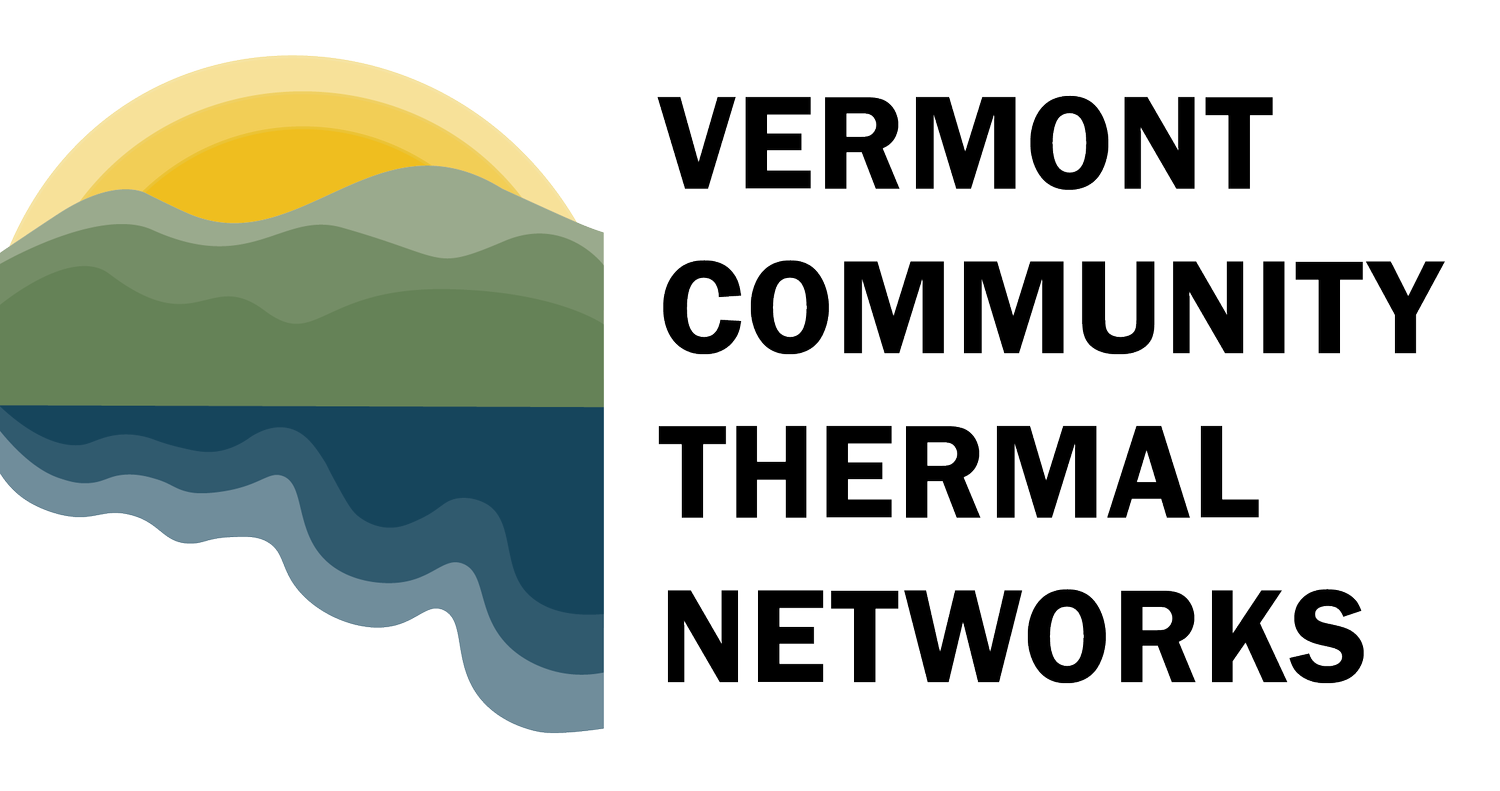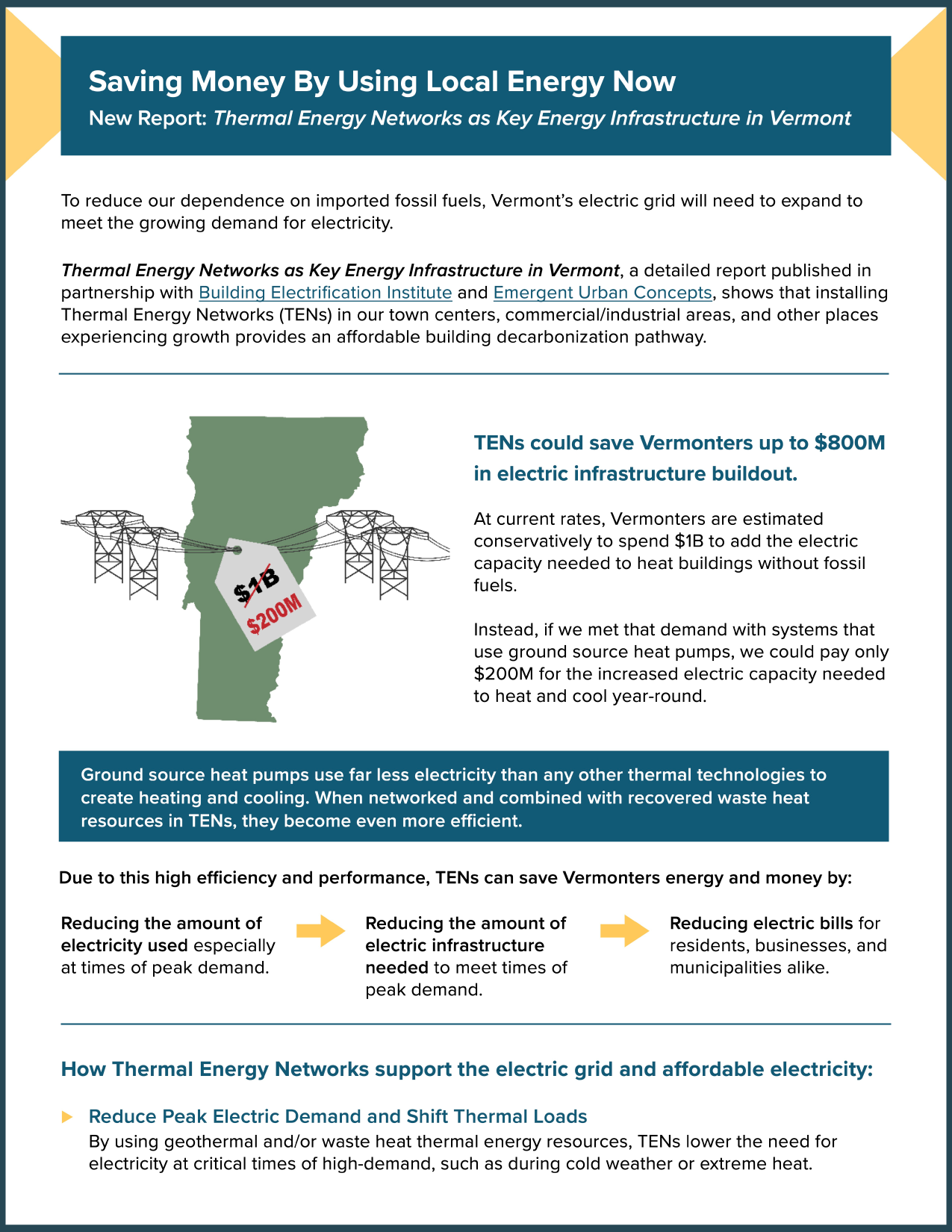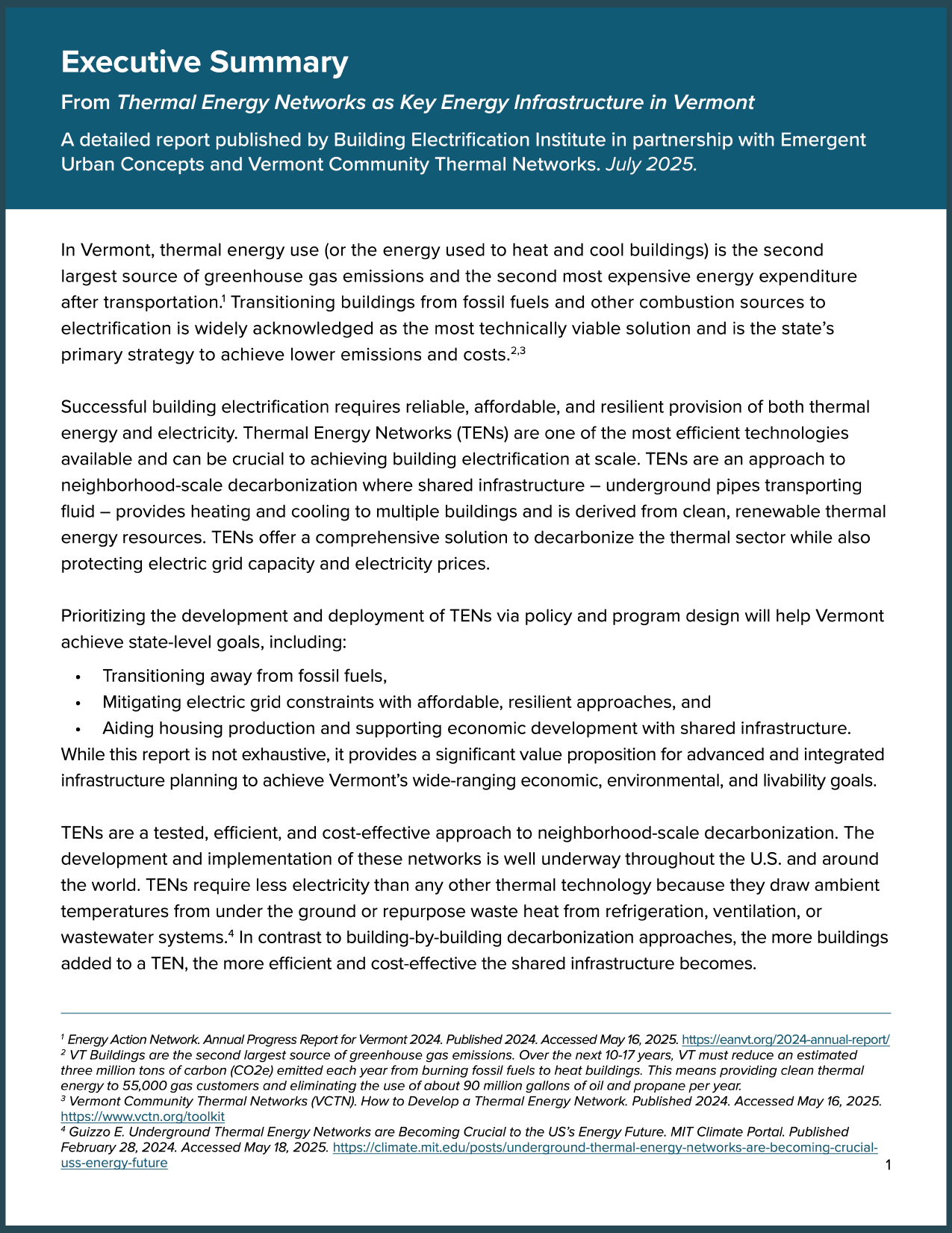JULY 2025
A new report published in partnership with Building Electrification Institute
“TENs are a critical tool for maintaining grid reliability and stability as Vermont transitions to a cleaner energy future. This function makes TENs a valuable resource with financial benefits.”
This detailed report examines how Thermal Energy Networks (TENs) can contribute to and support resource efficient building decarbonization in Vermont.
Using utility data to calculate the potential savings TENs could deliver, the analysis:
Makes a compelling case for the high efficiency, peak-shaving, and cost-saving value of TENs as a capacity resource for Vermont’s electric grid.
Forecasts the impact of broad deployment of TENs in Vermont’s designated centers, intentional growth areas, and commercial/industrial parks.
Offers several policy recommendations to facilitate TEN development.
Additional Materials
From the Report
Key Benefits of TENs as a Firm Capacity Resource
Reduce Grid Congestion
TENs supply heating and cooling without relying on less efficient electric heating systems during peaks.Lower Operating Costs
TENs replace expensive peaker plants with efficient thermal solutions.Increase Renewable Energy Utilization
TENs balance intermittent renewable generation through integrated thermal energy storage.Enhance Resilience
TENs ensure stable heating and cooling despite grid fluctuations.
“TENs could save Vermonters up to $800M in electric infrastructure buildout.
At current rates, Vermonters are estimated conservatively to spend $1B to add the electric capacity needed to heat buildings without fossil fuels.
If that demand could be met with TENs-connected heat pumps, the increased electric capacity needed to heat and cool year-round could cost only $200M.”







